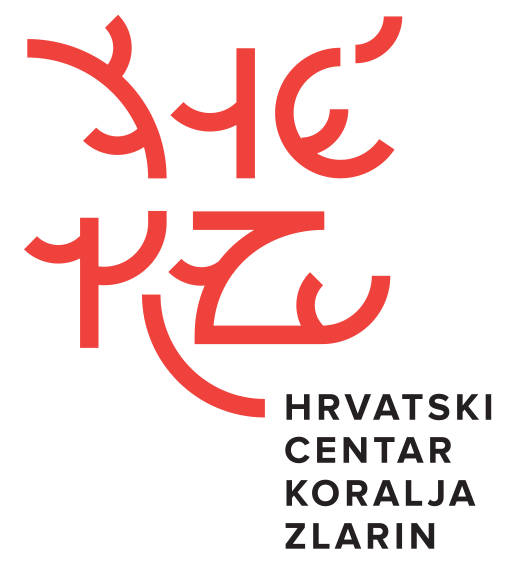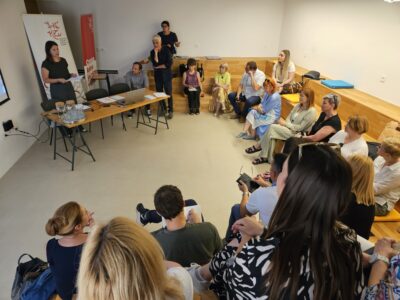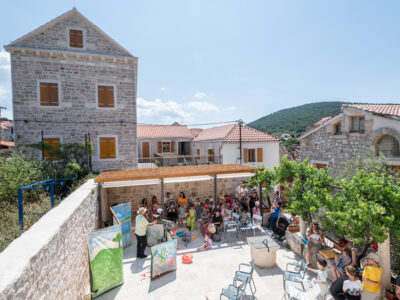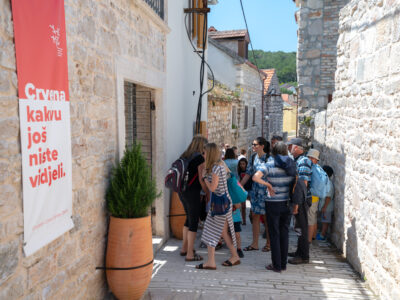In addition to Croatian experts such as Darko Komšo from the Archaeological Museum of Istria, Ljiljana Marks, a researcher of Zlarin as part of the Institute of Ethnology and Folklore Research project, Ozana Palić from the company Urbanex, and Goranka Horjan, director of Trakošćan Castle Museum and president of the International Committee for Museum Management (INTERCOM), international experts also participated: Deborah Ziska (lecturer in Museum Studies and Cultural Heritage Management Graduate Programs at Johns Hopkins University), Cristina Vannini (ICOM-Intercom), and Jane Leget (Head of Research at Auckland Museum and a Research Associate at Auckland University of Technology and Victoria University of Wellington). Additionally, many representatives from prominent cultural institutions in Croatia attended as guests, including the Museum of Ancient Glass in Zadar, the Ivan Meštrović Museums in Split, the Ivo Pilar Institute of Social Sciences, the Croatian Museum of Tourism, the Faust Vrančić Memorial Center, and the Public Institution Priroda of Šibenik-Knin County.
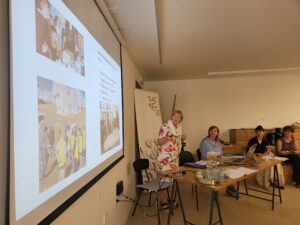
The project, financially supported by the Croatian Ministry of Culture and Media, ICOM, ICOM HR, and INTERCOM, aims to preserve cultural heritage and address challenges faced by communities worldwide.
“This symposium was organized with the goal of strengthening the capacities of experts, local stakeholders, and the community to create a stronger impact of cultural heritage in a specific area. The Coral Center Zlarin is an excellent example of how a cultural institution can influence the life of the local community. From the beginning, our vision was to become the cultural and social hub of Zlarin Island while preserving heritage and educating locals and visitors about the importance of biodiversity conservation. At the symposium, we saw other wonderful examples and success stories,” said Katarina Gregov, head of the Croatian Coral Center Zlarin.
Goranka Horjan highlighted the importance of conferences like the one held in Zlarin, especially for enabling interaction and experience exchange among participants. “We select relevant themes and every time we focus on where we are heading and what the needs of a particular community are. Here, we focused on the aspect of cooperation with and working for the local community, including all components that might not solely belong to museum activities. This opens new questions and challenges for us as museum professionals considering the resources we have,” said Horjan.
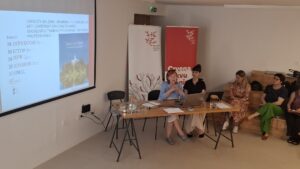
Deborah Ziska from Washington, an expert in marketing and PR for museums, emphasized that it’s no longer enough for museums to be self-sustaining. “This conference highlights new guidelines on the role of museums in our community. Is it enough to be self-sustaining, or do we need to be more proactive? It’s very interesting to come to the island and see how a museum or center becomes integrated into the life of the local community. Here, the brand is the island of Zlarin itself. We can learn a lot from centers like this. Small and medium-sized museums have become very important and influential institutions shaping the environments they operate in. I see that happening here in Croatia as well,” concluded Ziska.
